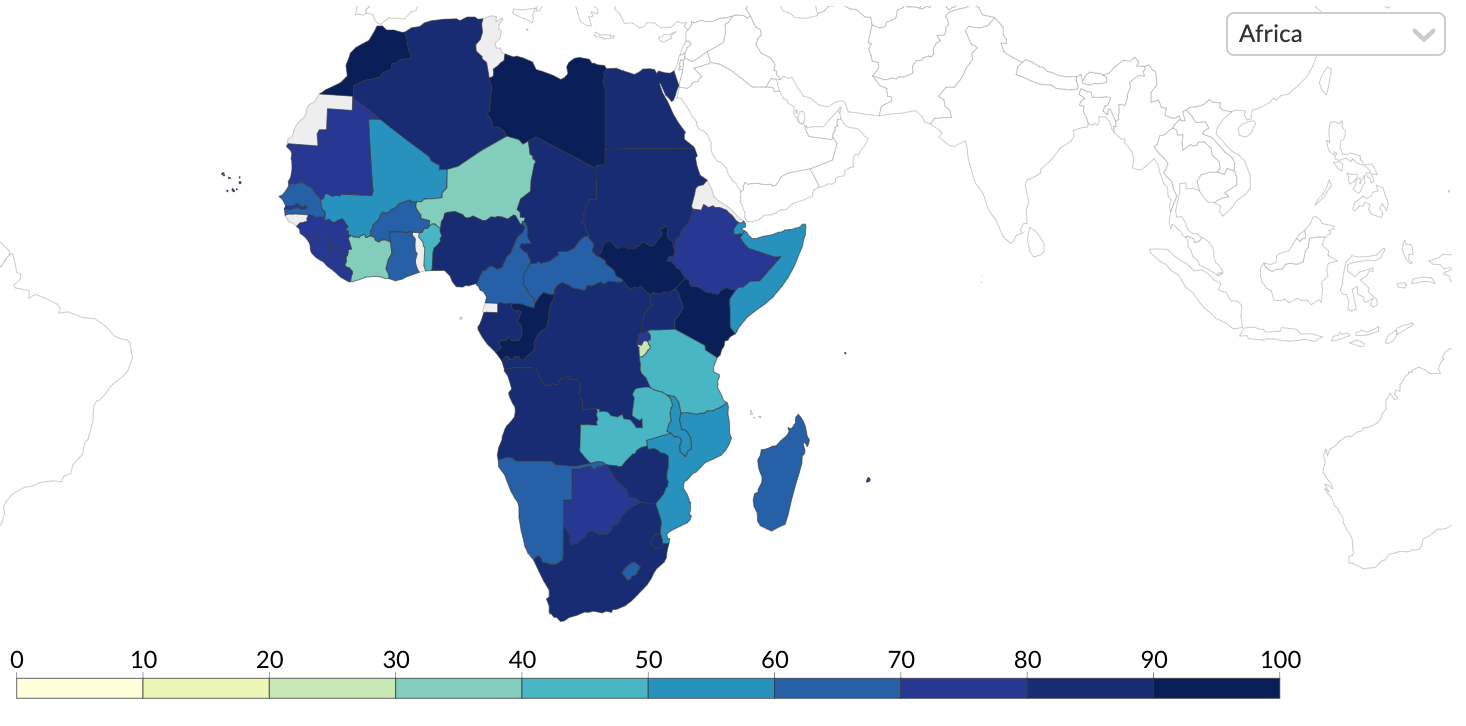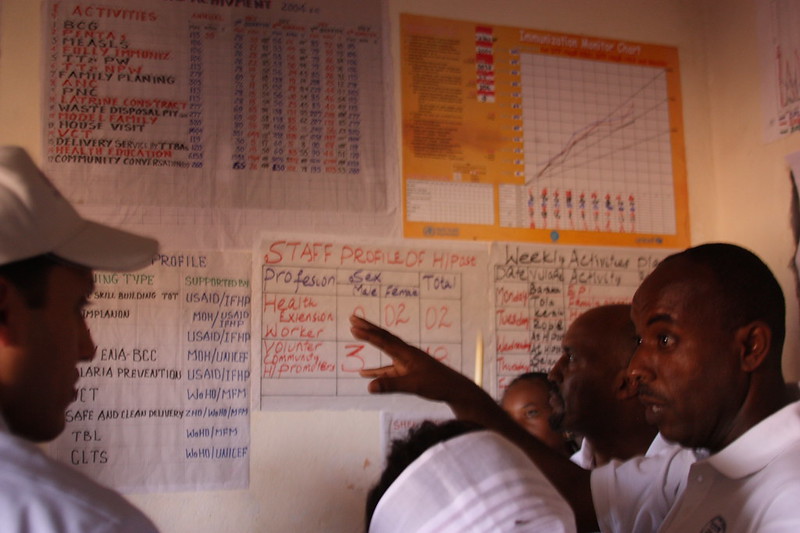Recommended
In a recent blog, we announced a tool for estimating the net health impacts of COVID-19 response policies. The tool allows users to input data and adapt existing COVID-19 models to incorporate non-COVID-19 related deaths, as they have neglected to include this important information. We’ve received many helpful comments on the tool, some of which highlighted a possible area of misunderstanding: in stressing the high numbers of additional people who are dying as an indirect result of COVID-19 measures, we may have given the impression that we believe that there would be no additional non-COVID-19 deaths in an unmitigated scenario. We don’t believe that. We aimed to illustrate how the calculator works, and to demonstrate how users can adapt it to their own setting. The key to the tool is that each user is able to adapt it for their own setting.
Any calculations that we included as examples were not intended to be accurate estimates. In the Sahel example, we assumed that mortality due to transport and unintentional injuries would go down by 50 percent over three months, and that all other causes of non-COVID-19 mortality would increase by 20 percent, gradually returning to pre-COVID-19 levels over 18 months. These were assumptions to illustrate how the model works and should not be taken as actual estimates for the Sahel region. Other users interested in this region—and this is true for the calculator more generally—should use their own assumptions and where possible, their own data. The calculator is constrained by the range of mitigation and suppression scenarios modeled by other groups. But it is important to remember that these predictions (indeed all models) also use numerous assumptions—indeed some commentators have referred to them as “educated guesswork”. That’s why it is so important to communicate the assumptions that we are making.
But first of all, what is an unmitigated scenario?
Many modelers consider this to be a scenario where neither governments nor citizens take any action to reduce the spread of disease. This is a very strong assumption and should be communicated clearly. Imperial College London’s Report 12 characterized the unmitigated scenario as “the absence of interventions or spontaneous social distancing.” Yet the same team in their earlier Report 9 stated that it is “highly likely that there would be significant spontaneous changes in population behaviour even in the absence of government-mandated interventions.” A quick glance across policies adopted throughout the world, as shown by this tracker, shows that government responses differ between countries, but all countries have taken some action. In other words, an unmitigated scenario is not an appropriate comparator for COVID-19, as there are no examples of countries where neither the government, nor the people, have responded in some form.
An unmitigated scenario is not an appropriate comparator for COVID-19
Why do we want to mitigate or suppress the spread of COVID-19?
We mitigate to allow capacity in hospitals to treat and save (some) lives. This is what is referred to as “flattening the curve.” The process is a means to an end, rather than an end in itself, or “making it to the raft rather than dry land.” In an unmitigated scenario, when hospitals become overwhelmed, more people die, and these can be both COVID-19 related deaths and non-COVID-19. If we mitigate or suppress then we put hospitals in the best position possible to treat the greatest number of people. But in doing so we introduce constraints which will impact the demand and supply of essential services; for instance, we could (especially in settings where hospitals are already operating at capacity) be “crowding out” other patients. Mitigation and suppression measures have broader effects on the demand for, and supply of, essential health services. The COVID-19 predictions to date only count COVID-19 deaths in unmitigated and mitigated scenarios; our calculator attempts to provide users with the ability to consider both sides of the equation, i.e., non- COVID-19 deaths too.
Revisiting the assumption of zero non-COVID-19 excess deaths. And using a more realistic comparator
Below, we present two new scenarios—scenarios B and C (scenarios A and D are the same as reported in the earlier blog). And this time, we would like to stress that these are assumptions that others should adjust based on their own priors and available data.
This is the same unmitigated scenario from the earlier blog, in which we assumed no excess non-COVID-19 deaths.
In this new unmitigated scenario, we assume transport and unintentional injury deaths go down by 10 percent over three months, and that all other causes of non-COVID-19 mortality increase by five percent, gradually returning to pre-COVID-19 levels over 18 months.
Given the issues noted above with an unmitigated scenario, we also select Imperial’s population social distancing scenario (and of course, users can select or define a different scenario from the tool). For this, we assume transport and unintentional injury deaths go down by 25 percent over three months, and that all other causes of non-COVID-19 mortality increase by 10 percent, gradually returning to pre-COVID-19 levels over 18 months.
This is the same early suppression scenario from the earlier blog, in which we assumed transport and unintentional injury deaths go down by 50 percent over three months, and that all other causes of non-COVID-19 mortality increase 20 percent, gradually returning to pre-COVID-19 levels over 18 months.
In this blog we report the net health benefit in terms of mortality (Table 1) and also years of life lost (or YLLs) (Table 2).
Table 1. Net health impact of various scenarios in terms of deaths(rounded to the nearest thousand)
| Scenario | COVID-19 deaths | Non-COVID-19 deaths | Net health benefit |
|---|---|---|---|
| A: Unmitigated | 735,000 | 0 | |
| B: Unmitigated with spontaneous social distancing | 735,000 | 92,000 | |
| C: Population social distancing | 548,000 | 125,000 | |
| D: Suppression at 0.2 | 91,000 | 360,000 | |
| D vs. A (same as earlier blog) | 644,000 COVID-19 deaths averted | 360,000 excess non-COVID-19 deaths | 284,000 fewer deaths |
| D vs. B | 644,000 | 270,000 | 375,000 |
| D vs. C | 457,000 | 235,000 | 222,000 |
Based on these assumptions, the revised unmitigated scenario would lead to 92,000 excess non-COVID-19 deaths. Therefore, the policy of suppression triggered by deaths of 0.2 per 100,000 per week does even more good than previously estimated, averting more around 375,000 deaths on a net basis (compared to 284,000). Suppression also does more good than harm compared to population social distancing, averting more than 220,000 deaths on a net basis.
However, using the same assumptions, but reporting the results in terms of YLLs, shows the opposite conclusion. Now, instead, suppression does more harm than good compared to our revised unmitigated scenario (causing more than 10,000,000 extra YLLs on a net basis) and also compared to population social distancing (causing more than 7,000,000 extra YLLs on a net basis). This is because on average each COVID-19 death in the Sahel region represents 14.8 YLLs, whereas each average non-COVID-19 death represents 59.8 YLLs (see our user guide for more details about how we calculate YLLs).
Table 2. Net health impact of various scenarios in terms of YLLs (rounded to the nearest thousand)
| Scenario | COVID-19 YLLs | Non-COVID-19 YLLs | Net health benefit |
|---|---|---|---|
| A: Unmitigated | 10,905,000 | 0 | |
| B: Unmitigated with spontaneous social distancing | 10,905,000 | 5,425,000 | |
| C: Population social distancing | 8,132,000 | 7,490,000 | |
| D: Suppression at 0.2 | 1,359,000 | 21,506,000 | |
| D vs. A | 9,546,000 COVID-19 YLLs averted | 21,506,000 excess non-COVID-19 YLLs | 11,960,000 more YLLs |
| D vs. B | 9,546,000 | 16,081,000 | 6,535,000 |
| D vs. C | 6,773,000 | 14,016,000 | 7,243,000 |
Conclusions
We made some assumptions in this blog to show how the calculator works. But users must make their own assumptions based on their own priors and data when available
- We do not believe there would zero excess non-COVID-19 mortality in an unmitigated scenario. We do believe an unmitigated “do nothing” scenario is unrealistic and therefore potentially misleading.
- The calculator does not “make assumptions” but offers a completely blank canvas for users to input their own assumptions. The only pre-entered data are the predicted COVID-19 deaths and the global burden of disease (or GBD) estimates. The impact of each scenario on non-COVID-19 mortality, and therefore on a net basis when comparing to COVID-19 deaths, is based on assumptions made by users based on their knowledge and any available data from the setting of interest. We also plan to publish a number of country case studies using local data as well as “reasonable” assumptions based on the evidence emerging so far on indirect health effects.
- We note that many of the same modelers are publishing reports separately on COVID-19 and non-COVID-19 health outcomes (here and here). They make equally (and justifiably so) dramatic headlines calling for a tough COVID-19 response one day, and exceptional measures to protect routine services from the impact of the virus and of the response, the next. We need models predicting the trajectory of COVID-19 infections and deaths under different scenarios to also consider the consequences for other health services in the same report so policymakers can consider the health trade-offs inherent in their decisions. In lieu of that, our calculator is a simple tool that can facilitate a comparison of the non-COVID excess mortality to the COVID excess mortality reported by Imperial and others.
- We made some assumptions in this blog to show how the calculator works. But users must make their own assumptions based on their own priors and data when available. We hope the calculator is used to highlight evidence gaps urgently needing addressing to inform a reasonable policy response. Ultimately, we want to stress that trade-offs are inevitable and when those generating the evidence-base, whether empirically collected data or modelled estimates or a combination of both, opt not to consider such trade-offs, they are making a significant scientific value judgement with direct implications on policy and therefore on people’s livelihoods now and in the future.
Disclaimer
CGD blog posts reflect the views of the authors, drawing on prior research and experience in their areas of expertise. CGD is a nonpartisan, independent organization and does not take institutional positions.
Image credit for social media/web: World Bank Photo Collection/Twitter






